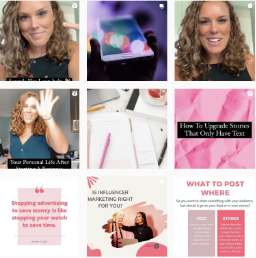Who doesn’t enjoy a good story? When done right, storytelling creates a thread that can take just about any topic or idea – no matter how complex – and mold it into a compelling narrative that makes us want to know more.
Not only that, but when a story resonates with us, it increases oxytocin which is the “feel good” hormone. A good story can engage our emotions and boost feelings such as trust, compassion, and empathy. This can lead to the influence of our social behavior and leave us open to suggestions.

Storytelling, when done through public relations, works the same way. As PR professionals, our job is to find a company’s unique story and share it with customers, leads, employees, stakeholders, the media, etc. with the intent to build trust and influence social behavior.
But it all starts with the story.
So, how do you know what the story is?
We start by asking questions. LOTS of questions! Questions like “what sets your company apart from the competition?” or “how is your company different from others out there?” or “what specific pain points are you solving for your customers?” to get a clear picture of where the unique stories lie within the organization.
And, while you may be tempted to respond with “our employees set us apart” or “we have the highest quality product on the market today,” we are looking for something deeper than that. Statements like these may be true, but they are not necessarily unique. (I mean, what company doesn’t claim to have the best team, products, value, or mission??) Unless you have tangible and specific data to prove these statements to be true, the story that sets you apart may require a little more digging.
So, let us help you answer the burning question: how do you identify the story worth sharing? After reviewing years of successful PR campaigns, we have pieced together five tips for finding the best stories, so you can share those stories with the media, and ultimately, a broader audience!
1. Talk about the turning points
Turning points in a brand’s history can make for impressive, shareable moments. Have you faced times of adversity or major changes that led you to something better? While you may be hesitant to talk about your company’s difficult times, there could be an excellent PR-worthy piece in there. Everyone loves an underdog, and vulnerability often builds immense trust with an audience.
2. Proof or it didn’t happen
Journalists often need to show, not tell. While you may want to brag about your company’s mission, guarantees, or even risks, you need to be prepared to give specific examples. Think about times when you followed through on a guarantee, went the extra mile for a customer, took a big risk that paid off, etc. The details are what makes the story memorable and tangible.
3. Think outside the box
The story is not always obvious. It could be about a service or a product. It could be about an individual leading the organization or an employee on the ground level. The story could even be about the overall organization. Sometimes stories hide in the most unexpected places. Think about the things within your organization that make you proud, things you may brag about to your friends. Use this as a barometer – if your friends want to hear about it, it’s likely a wider audience wants to hear about it too.
4. Get personal
Maybe your story isn’t solely about the company itself. If you are going through a cycle where there aren’t many groundbreaking events happening, it’s time to delve into the personal stories of the people that run your organization. Creating personal connections with readers can boost trust just as much, if not more, than telling stories about the company itself. Stories like how the company was formed, how the owner’s culture or background influences the company’s mission, or how someone in the company is making an impact outside of work, can offer readers relatability and tell a lot about the company’s values, culture, and goals.
5. What’s relevant?
What is happening in the current news cycle? What are people tuning in to learn about? What pop culture news is taking over social media? Now, step back and see how you can intertwine your company’s information with these topics. Think about personal backstories, delve into market research or research hot topics in your industry that may be relevant to a wider audience. Don’t copy competitors, but research what kinds of things they have done to see what’s worked and what’s failed. It can give you ideas of things to try (and to avoid).
Every company has a story, you just need to determine which ones are worth telling. We hope these tips help you uncover the stories about your business you may not have known were there. And if you need help telling those stories to the right audiences, we are always here to help!

